Meditation & Yoga
MEDITATION
An ever-increasing body of research shows various health benefits associated with meditation and these findings has sparked interest in the field of medicine.
The practice of meditation originated in the ancient Vedic times of India and is described in the Vedic texts. Meditation is one of the modalities used in Ayurveda (Science of Life), the comprehensive, natural health care system that originated in the ancient Vedic times of India. The term “meditation” is now loosely used to refer to a large number of diverse techniques. These include contemplation, concentration, use of nature sounds such as the ocean, guided meditation, meditative movement exercises such as Yoga and tai chi, qigong, breathing exercises, and Mantra.
These techniques work at different levels such as the senses, mind, intellect, and emotions. Some techniques are easy to learn and practice, while others are more difficult and can result in participants giving up the practice rather quickly. According to Vedic science (the knowledge of the Vedic texts of ancient India), the true purpose of meditation is to connect oneself to one’s deep inner Self. Techniques which achieve that goal serve the true purpose of meditation.
The neurological and physiological correlates of meditative experiences have been This article describes the process of meditation at a more fundamental level and aims to shed light on the deeper underlying mechanism of the beneficial effects associated with meditation. Research on the effects of meditation is summarized.

The process of meditation
To truly understand meditation, one has to understand how the human being is viewed by Vedic science – the knowledge of the Vedic texts of ancient India.[4,5,6,7] The human being consists of three aspects, with their associated functions:
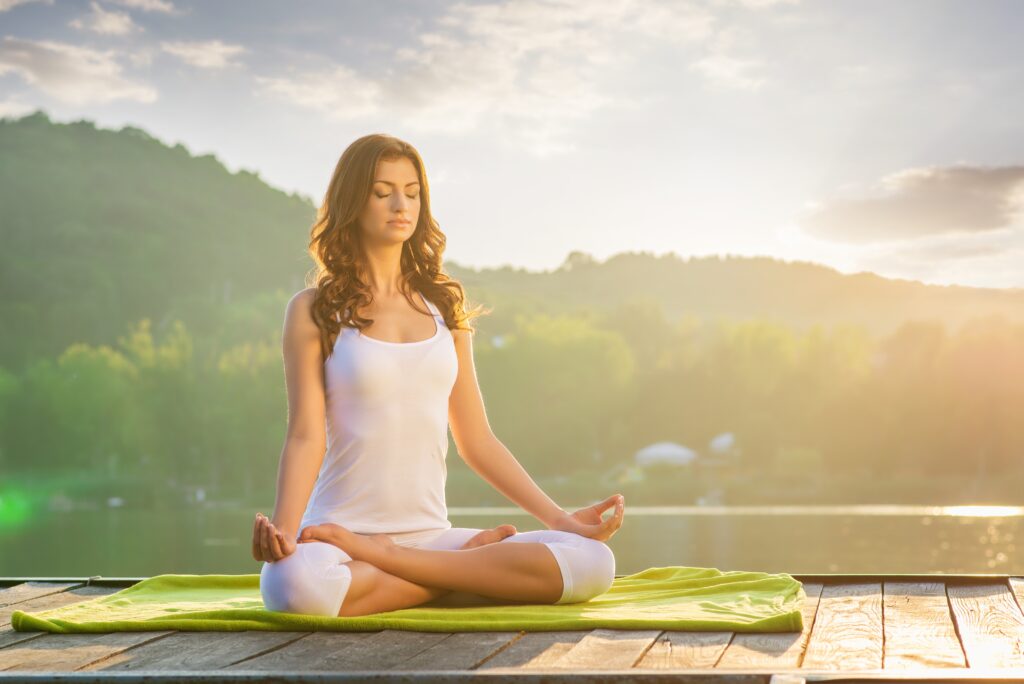
Physical body
Inner faculty: The working consciousness, which is constantly changing. This consists of:
Mind:
Processes sensory perceptions; has the quality of duality, as seen in pairs of opposites, for example, pleasure and pain, good and bad, hot and cold, etc.
Intellect: Analyzes, discriminates, decides, and judges Ego: Doer and experiencer
Chitta:
The storehouse of all memories and impressions of life
Deep inner Self: The non–changing pure consciousness, which has the quality of unity and witnesses the activity of the inner faculty. The deep inner Self is the source of all knowledge, intelligence, creativity, and all natural laws that govern existence.
According to Vedic science, the deep inner Self activates the inner faculty (working consciousness), which in turn activates the physical body. A feedback loop is provided by meditation, in which a conscious connection is made with the deep inner Self. This view of the human being correlates with the scientific view of deoxyribonucleic acid (DNA) in the body. On the cellular level, DNA creates and controls all activities in the body. Information from the DNA proceeds to ribonucleic acid (RNA), then to the amino acids, through which proteins are formed. A feedback loop to the DNA starts a new cycle to provide whatever is needed for the activities of the cell. In meditation, the feedback loop to the deep inner Self (the seat of knowledge, like DNA) provides inner peace and bliss, which removes the accumulated stresses of life and improves overall health.
Human beings routinely experience three states of consciousness:
- Waking
- Dreaming
- Deep sleep.
When the inner faculty is in the waking state of consciousness, it is aware of the physical body and is involved with the outside objective world. In the dreaming state of consciousness, it is aware of the inner dream world, but is not aware of the physical body. In the deep sleep state of consciousness, the inner faculty is not functioning at all and is not aware of anything. In this state, dualities such as pleasure and pain, good and bad, etc., are not experienced. There is no experience of stress, anxiety, guilt, greed, envy, jealousy, anger, etc. The only experience in this state of unity is peace and bliss. This is why deep sleep
YOGA
Explore The Ancient Roots of Yoga
Yoga is an ancient practice focusing on breathing, flexibility and strength to boost mental and wellbeing. It is composed of a group of physical, mental, and spiritual practices or disciplines. The main components of yoga are breathing and postures (a series of movements designed to increase strength and flexibility.)
The practice is said to have originated thousands of years ago in India and has been adapted in other countries in a variety of ways. Here we explore where it emerged from, what elements make yoga unique, and how it has been adopted by people all over the world.
Yoga’s origins can be traced to northern India over 5,000 years ago. The word yoga was first mentioned in ancient sacred texts called the Rig Veda. The Vedas are a set of four ancient sacred texts written in Sanskrit. The Rig Veda is the earliest amongst the vedas and is a collection of over a thousand hymns and mantras in ten chapters known as mandalas, which were used by Vedic age priests. Yoga was refined and developed by Rishis (sages) who documented their practices and beliefs in the Upanishads, a huge work containing over 200 scriptures.
Yoga is amongst the six schools of philosophy in Hinduism, and is also a major part of Buddhism and its meditation practices. You can find out more about the history of yoga here, from the Shri Yogendra Museum of Classical Yoga – the world’s first museum dedicated to yoga.
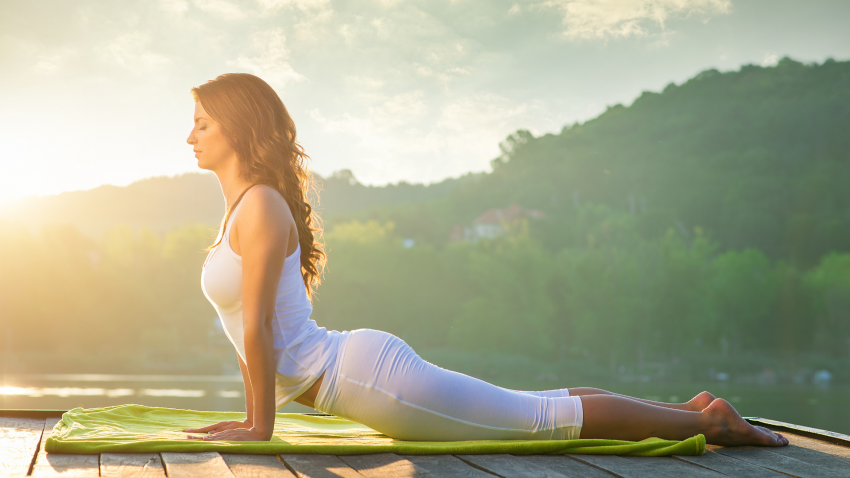
Types of Yoga:
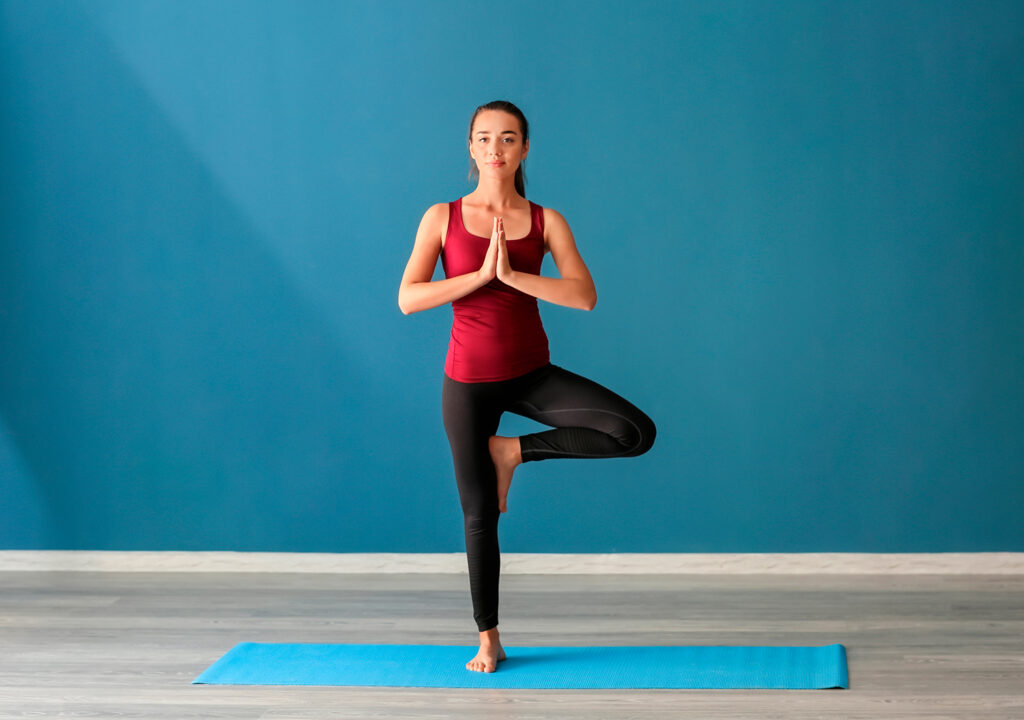
Hatha Yoga:
This is one of the oldest forms of yoga which includes the practice of asanas (Postures) and pranayama (breathing exercise) which brings peace to mind and body, and helps prepare the body for deeper spiritual practices such as meditation.
Vinyasa Yoga:
An active and athletic style of yoga adapted from the traditional ashtanga system in the late 1980s. It essentially means movement synchronized with breath and is a vigorous style based on the rapid flow through sun salutation. It also refers to the continuous flow from one posture to another.
Ashtanga Yoga:
Ashtanga is a system of yoga that was brought to the modern world by Sri K. Pattabhi Jois. This form of yoga includes six series and each series is a set sequence of asanas, always in the same order. It is typically fast-paced, vigorous and physically challenging.
Power Yoga:
Power yoga is described as vigorous, vinyasa-style yoga. Power yoga’s popularity has spread across the globe and is now taught everywhere. Because the style can vary, it is recommended that you consult the individual instructor before performing it.
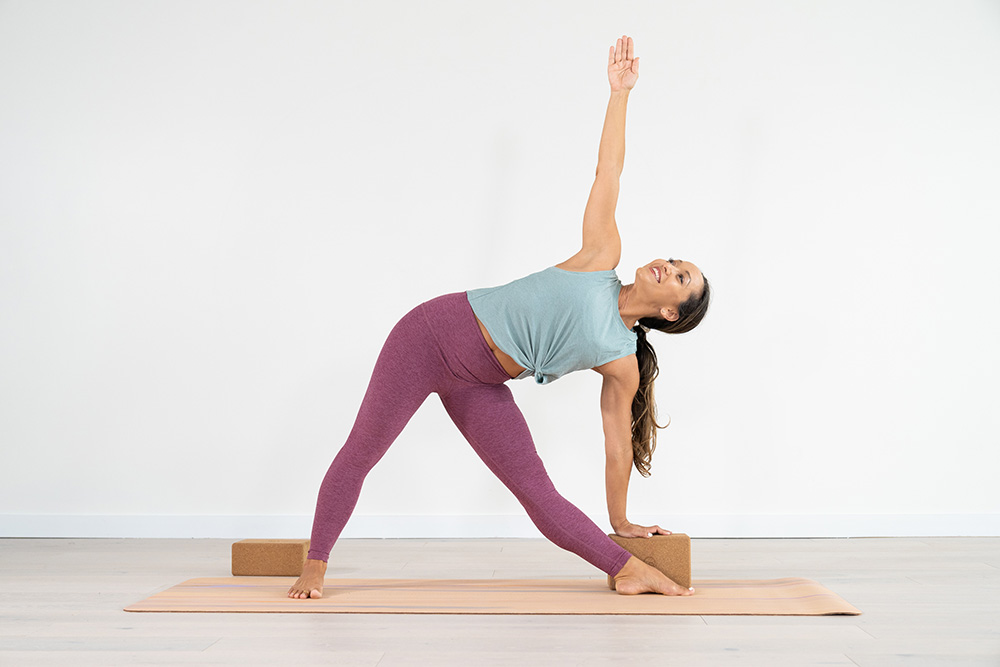
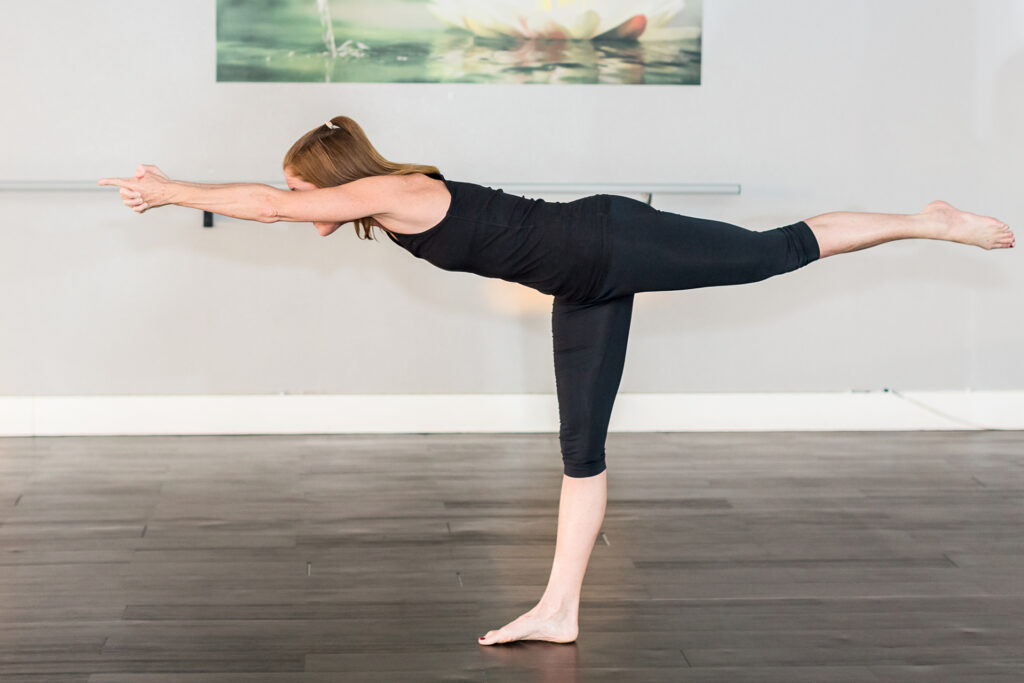
Bikram Yoga:
It consists of twenty-six postures and two breathing techniques. This style of yoga helps flush toxins, manage weight and allow performers to move more deeply into postures.
Jivamukti Yoga:
This style of yoga was created in 1984. Chanting, meditation, readings and affirmations are done in this style of yoga.
Iyengar Yoga:
Poses are held much longer in this form of yoga in an effort to pay closer attention to the precise musculoskeletal alignment within each asana. Another trademark of iyengar is the use of props, such as blocks, belts, bolsters, chairs and blankets, which are used to accommodate injuries, tightness or structural imbalances, as well as teach the student how to move properly into a posture.
Anusara Yoga:
The anusara style is a new system of hatha that teaches a set of Universal Principles of Alignment that underlie all yoga postures, while encouraging flowing with grace and following your heart. It is broadly categorized into three parts known as the three A’s and they include attitude, alignment and action
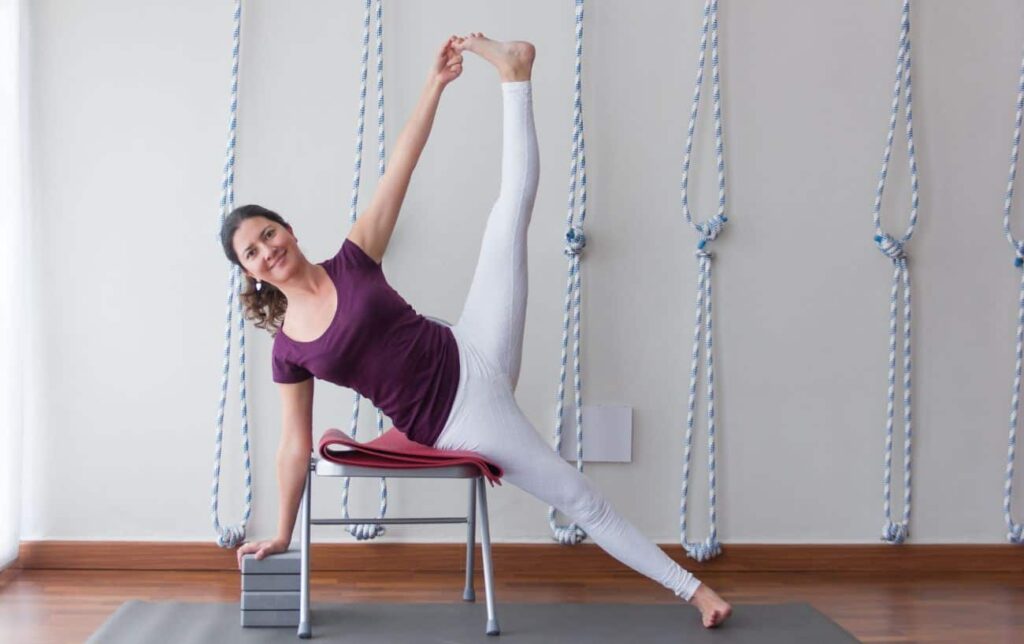
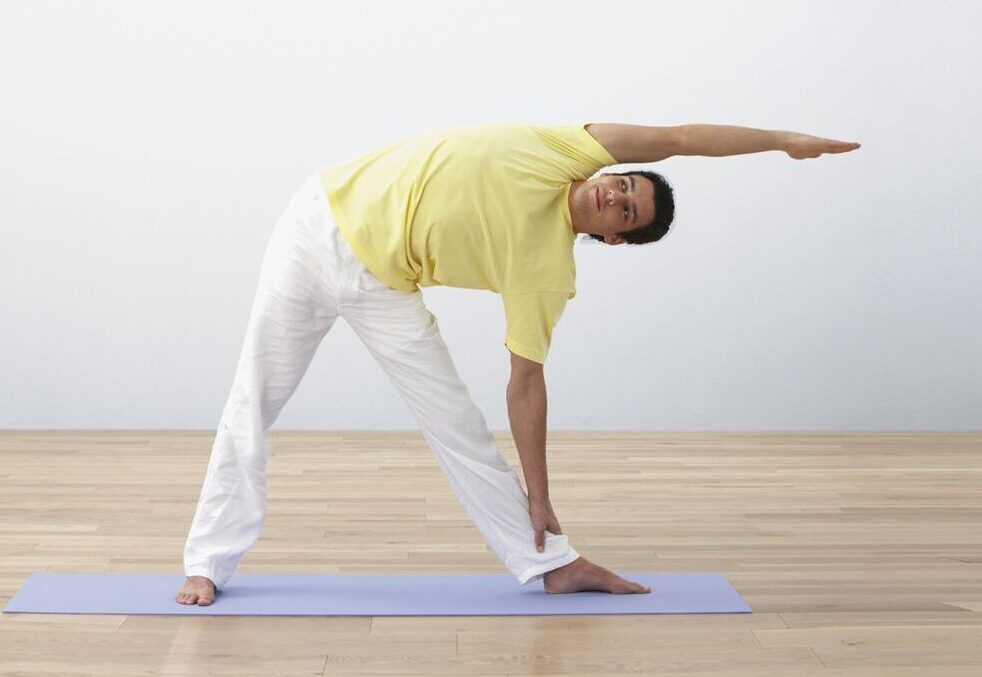
Sivananda Yoga:
It typically begins with Savasana (relaxation pose), kapalabhati and anuloma viloma, followed by a few rounds of surya namaskara. Then it moves through Sivananda’s twelve asanas, which together are designed to increase strength and flexibility of the spine. Chanting and meditation can also be a part of it.
Viniyoga:
Viniyoga refers to an appro
